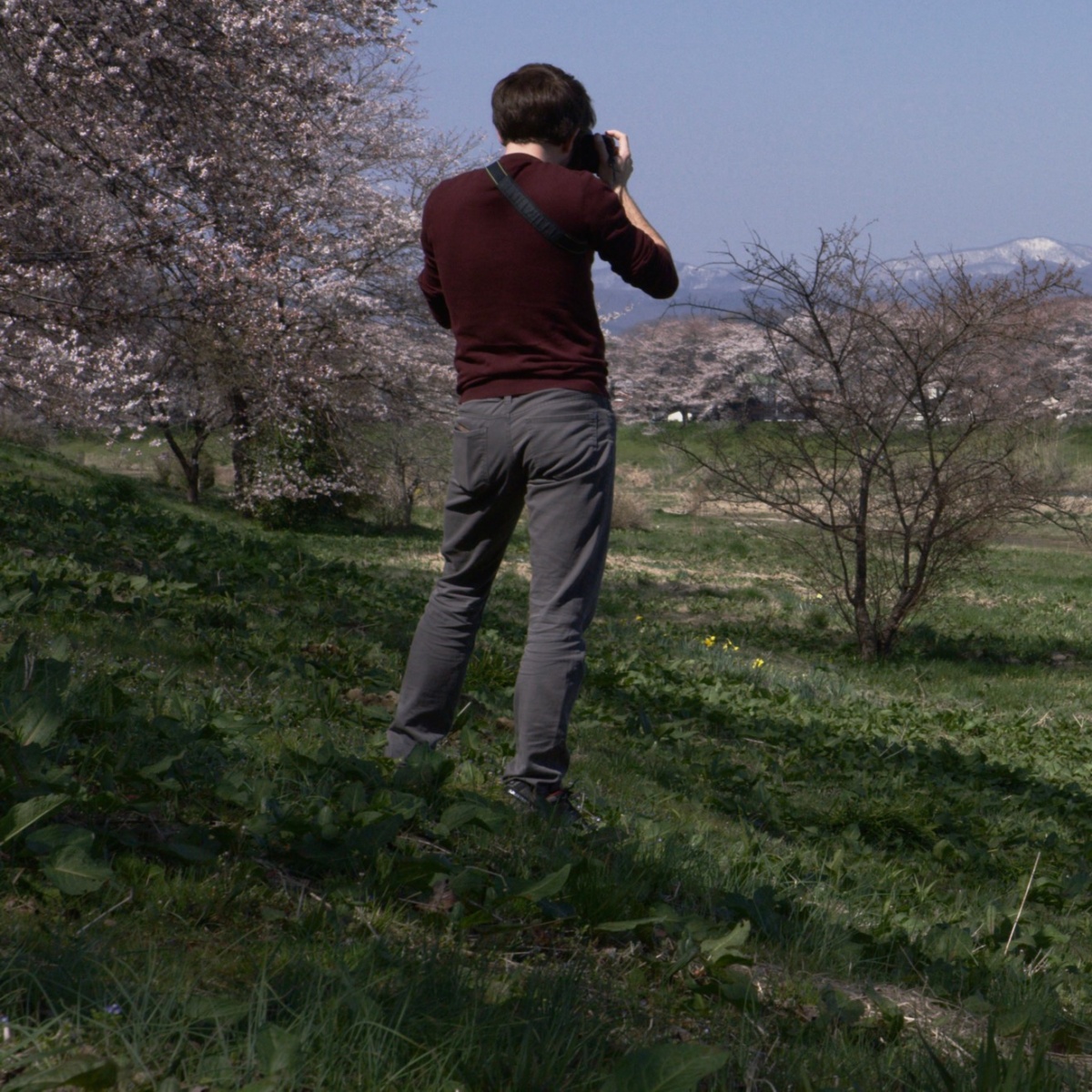Flock with the Seagulls at Kabushima Shrine
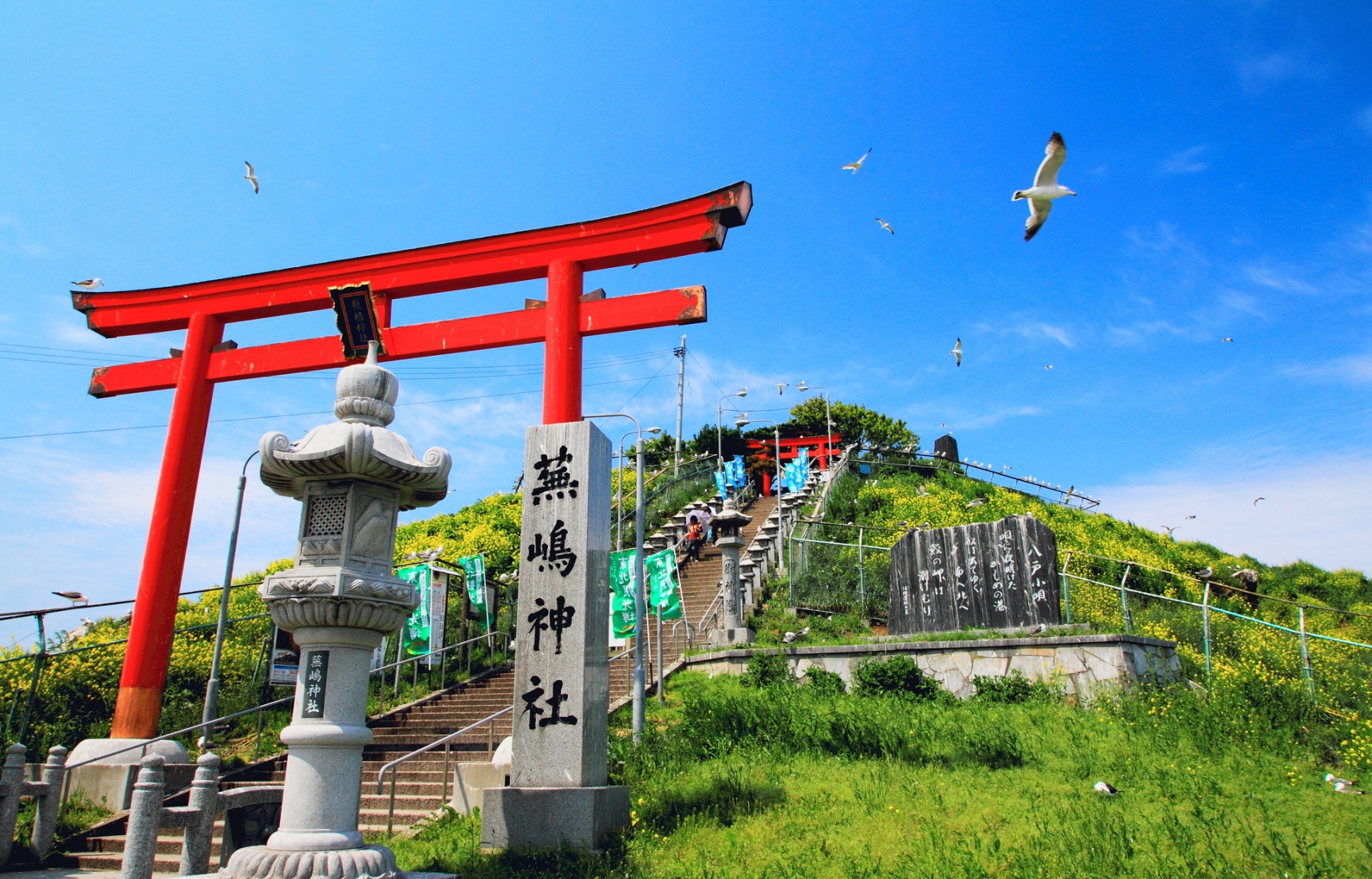
Kabushima Shrine, just outside of Hachinohe, is dedicated to the Shinto deity Benzaiten as well as the area’s local claim to fame: the umineko. I got the chance to visit the Tanesashi coast and check out the Aomori Prefecture shrine. Join me as I navigate through the umineko nesting area. Word of caution: don't forget your umbrella!
By Nicholas RichBackground

Kabushima Shrine (蕪島神社) is located on the island of Kabushima alongside the Tanesashi coastline in Aomori. It was originally established in 1269 by local fishermen who would pray for a good haul and safety while working on the open sea. These days, people also pray for good fortune on the stock market, since the Japanese word kabu (stock, 株) is a homophone. In 1922 the Japanese government declared it a National Natural Monument of Japan and it was incorporated into a nearby national park from 2013. Throughout the centuries it has been rebuilt multiple times; however, in 2015 the shrine burned downed completely. They have plans for reconstruction, but they operate on a unique schedule for a very specific reason…
A Gull by Any Other Name

For you see, the Kabushima Shrine is the preferred nesting ground of the area’s abundant population of umineko, Japan’s black-tailed gull. Unlike the seagulls in the coastal U.S. states that can be seen pretty much anywhere due to their tendency to crowd around parking lots and steal the snacks of unsuspecting beach combers, I hadn’t seen a single umineko during my time in Hachinohe. But it’s because they flock at the Kabushima Shrine that the reconstruction efforts are time-consuming; the bird is so venerated that workers don't want to disturb their habitat.
Since I thoroughly enjoyed the Kabushima cocktail at the Bar Prince in Hachinohe on my last trip to Tohoku, I didn’t need much convincing to check the shrine out on a beautiful, sunny spring day. Kabushima is a 20-minute car ride from the city (which I got to enjoy thanks to my main man, Kimura-san), or a 15-minute walk from Same Station (Same is Japanese for shark, but luckily there aren't any near the area).
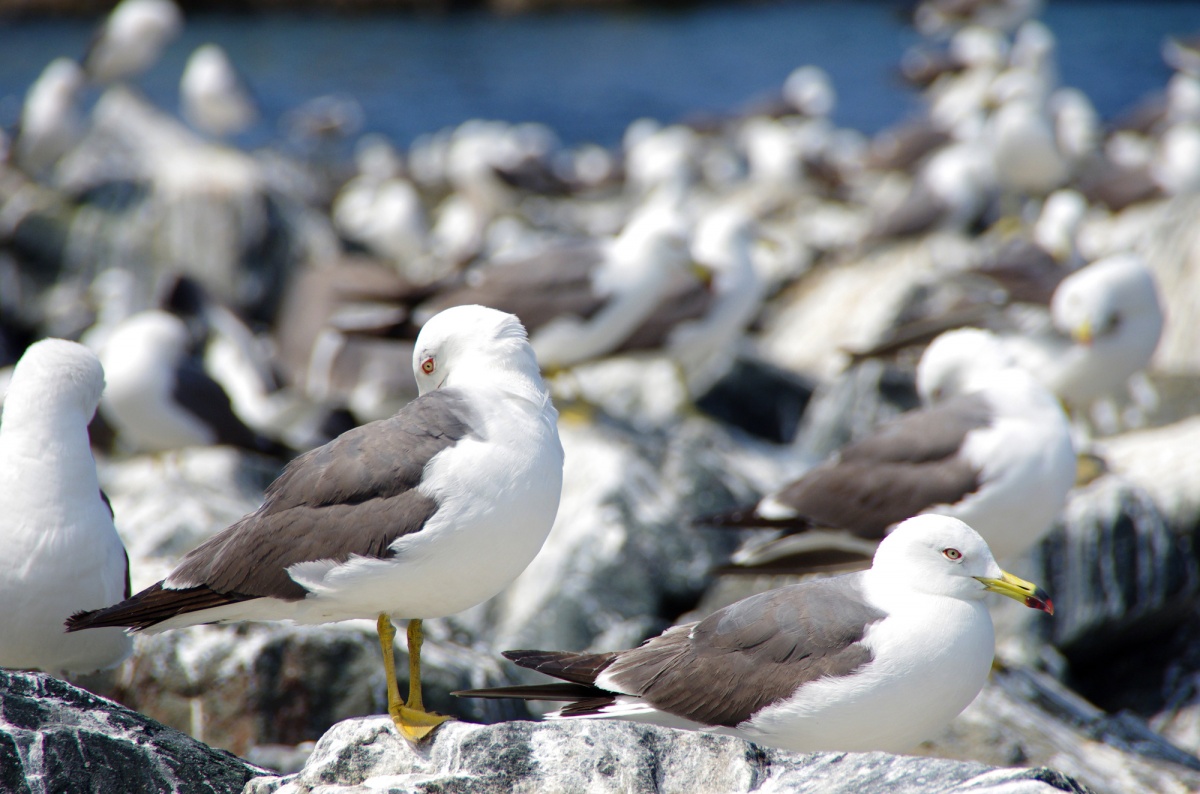
And trust me when I say the area isn’t simply the umineko's nesting place—it is positively BURSTING with them!
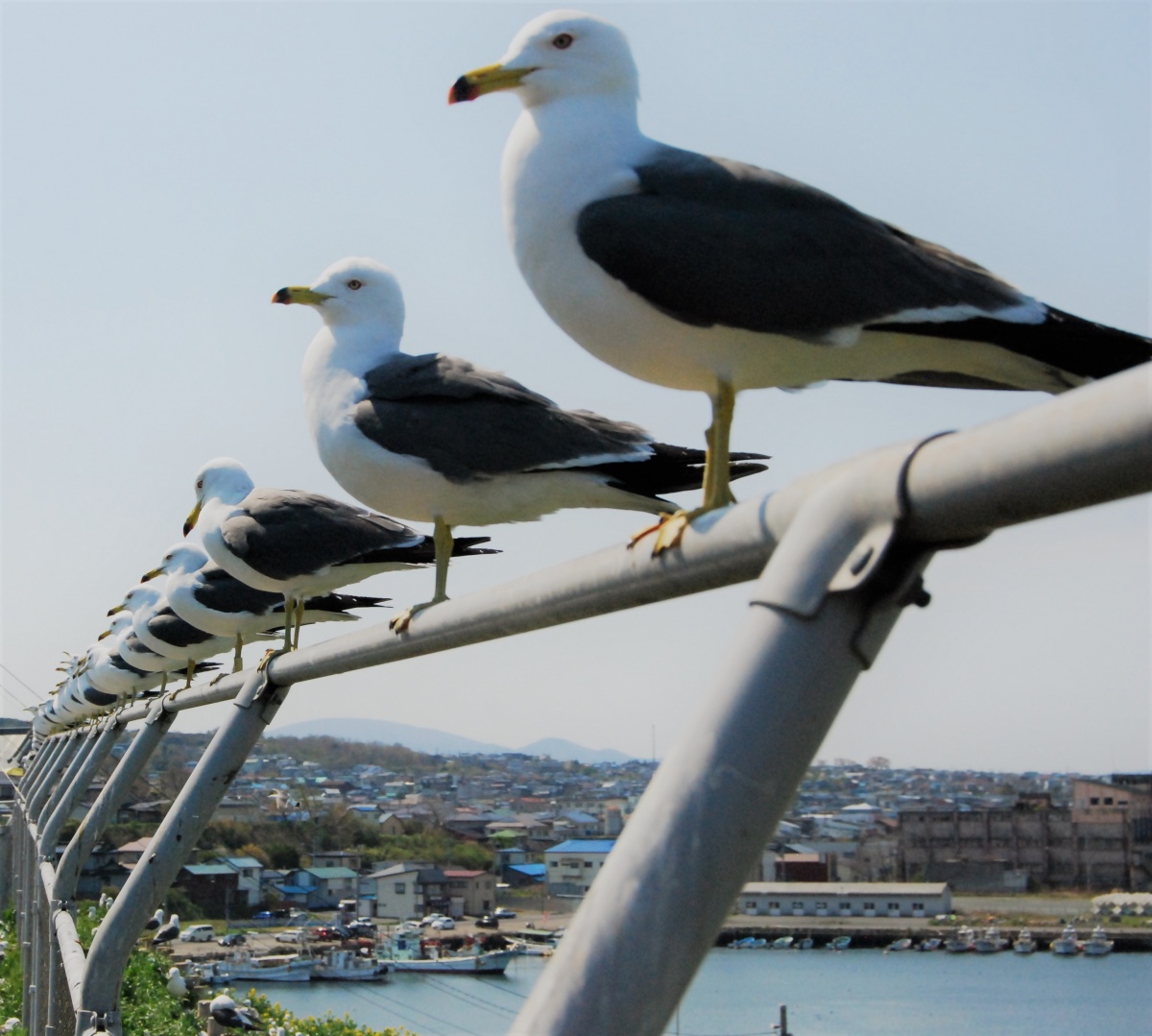
The sound of their cat-like cries is practically deafening, especially in the spring, which is apparently their mating season. It was a bit intimidating at first (after all, they outnumbered us significantly), but they were content to mind their own business. The site was surreal, unlike anything I'd ever seen.
The Unsung Hero of Kabushima
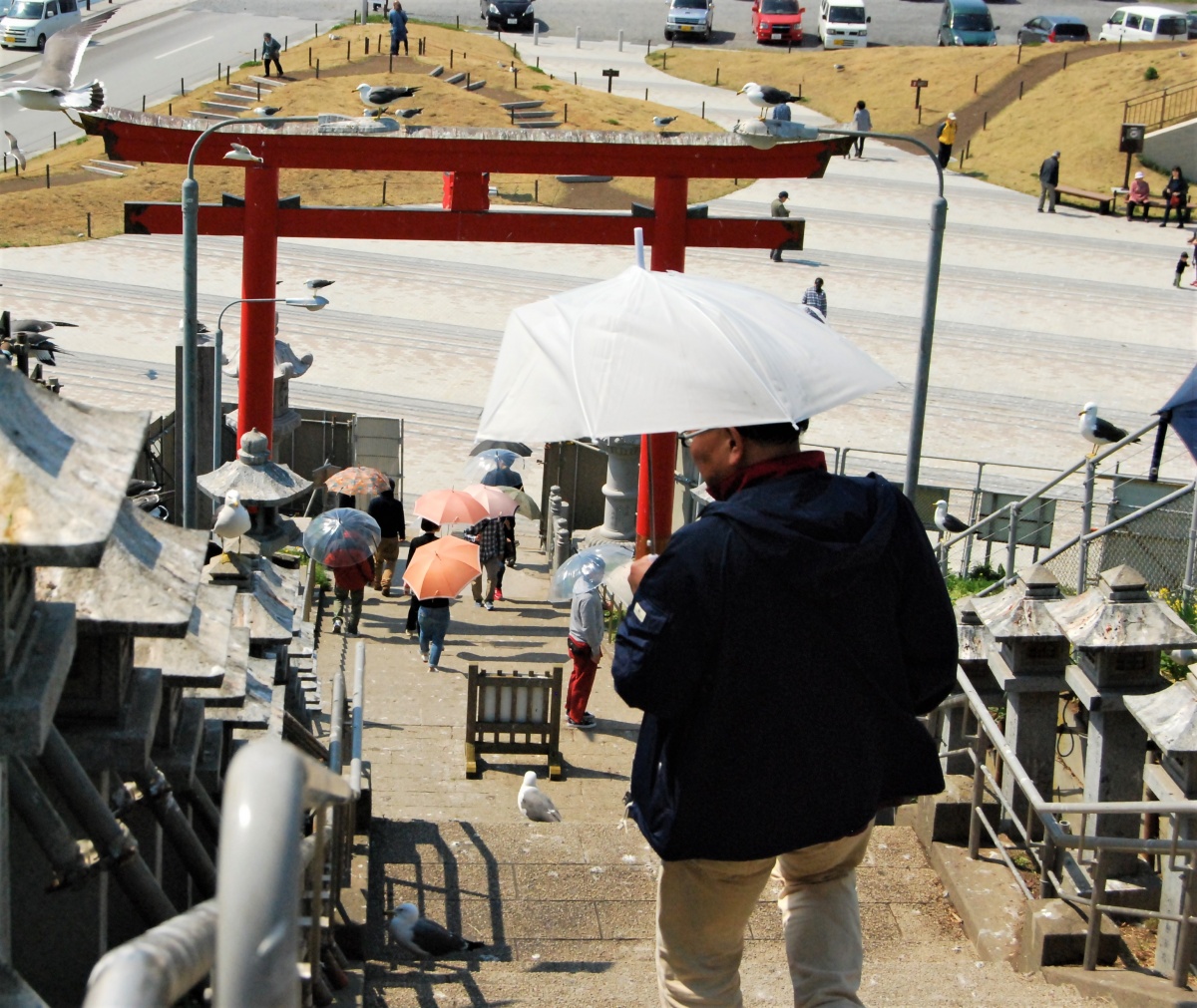
The scenery is gorgeous and the umineko are as charming as the residents would have you believe. But there’s one thing that's absolutely necessary to have for enjoying your visit to Kabushima: an umbrella. There are some available for communal use at the site or you can bring your own. But with so many birds in the air doing their dirty work wherever they please (not to mention the strong ocean breeze), an umbrella is essential!
Funny enough, locals consider getting hit with the droppings of an umineko a sign of good luck (although perhaps that’s just a way to make people feel better). If you go to the information desk/gift shop with proof of your fortune—resist the urge to immediately clean up—they’ll present you with a plaque to commemorate your visit, complete with your name and your number—they track how many people receive a gull "gift" each year.
Alas, (un)fortunately for me, I wasn’t the one hit and it wasn't my name that went into the history books.



